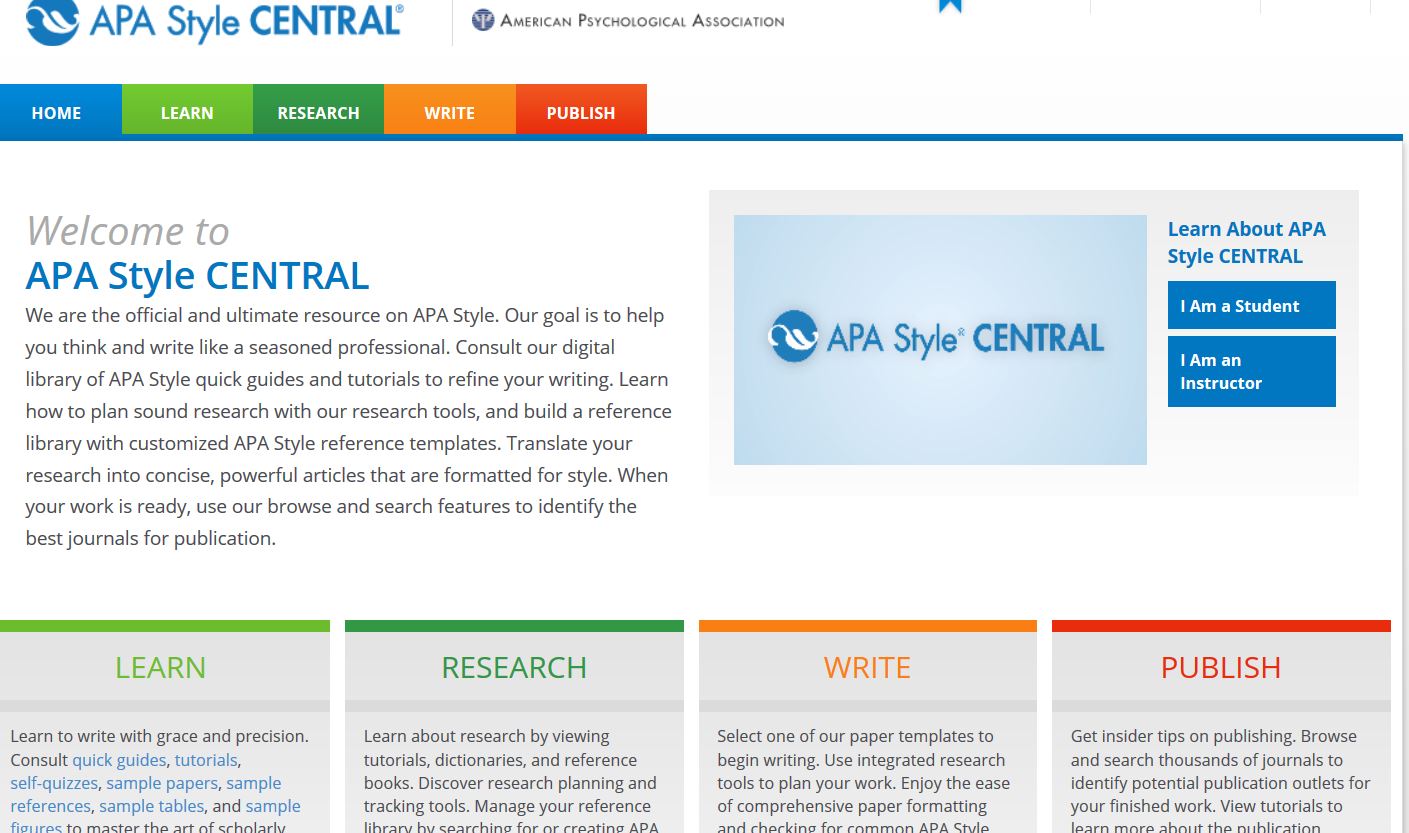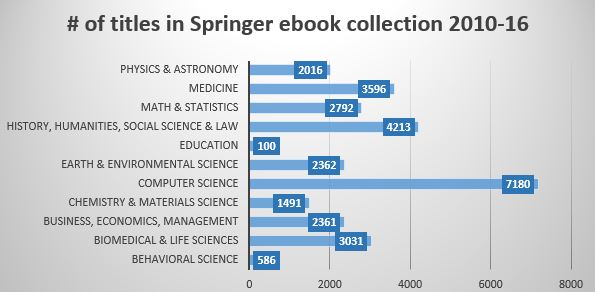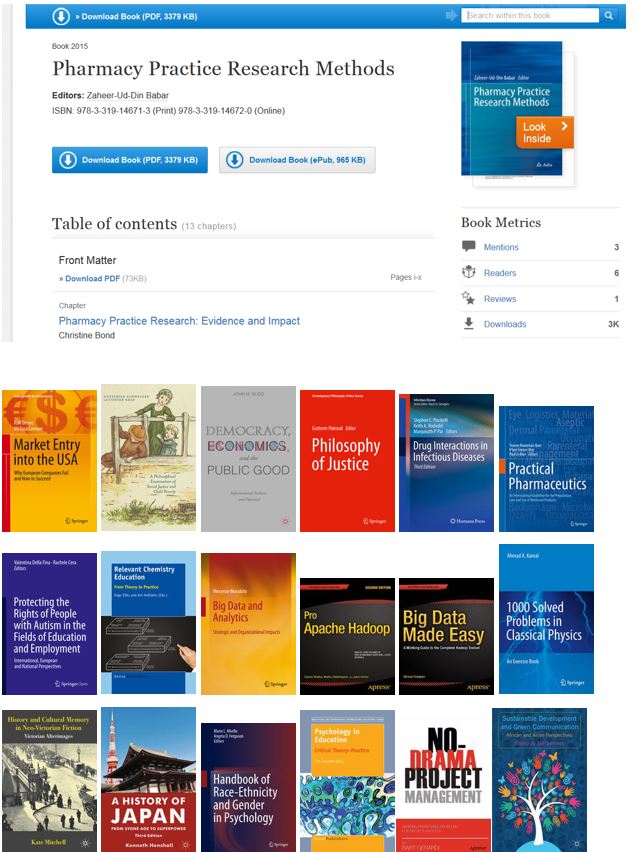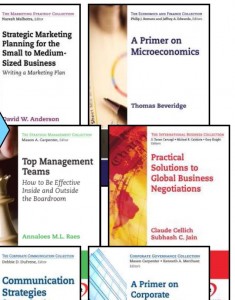By Rod Henshaw, Teri Koch and Laura Krossner.
This is the first of several postings that
will address the significant developments within scholarly publishing and
communication. Our purpose with these blog posts is threefold: 1)
identity the major recent developments; 2) examine how do these relate to our
collections and services, and 3) identify emerging scholarly publishing trends,
especially emerging alternative constructs to the current system. We invite
feedback and dialogue!
There are a couple of macro-factors to
consider as we go forward. First is the reality that the rate of change
is speeding up. In science fiction there is a term—the
singularity—in which the pace of technological change rapidly accelerates (with
both positive and negative consequences). We are approaching, if we
haven’t already entered into, an analogous situation with scholarly publishing.
Second, within any fluid change environment, there will be a variety of factors
to consider. The number of players in the scholarly publishing
environment is large, including, but not limited to: the research processes,
faculty needs, publishers, scholarly societies, libraries, technology,
governmental policy, open access, and the current financial climate for higher
education. These various players are going to be in different states of
evolution, responding as needed with their individual service needs and
business models. One of the primary challenges as this change goes forward is
making the best decisions for service at any given time.
For this first blog we want to
address The Big Deal and why it’s getting to be an even bigger deal. And
what approach we are taking for the time being.
Most of you are aware that the University
of California system recently declined to renew their big package deal with
Elsevier. https://www.chronicle.com/article/U-of-California-System/245798
This development has garnered a lot of
press coverage beyond the library field and on into the academic and general
press at large. This UC decision has led to strong support – with support
statements coming from other institutions – including Iowa State. https://www.insidehighered.com/print/news/2019/03/27/librarians-prepare-take-harder-line-publishers
Clearly, the UC action has emboldened other major systems and institutions to review their current deals, to take a harder line with negotiations, and to potentially not review package contracts. Here is a summary from SPARC regarding Big Deal activities: https://sparcopen.org/our-work/big-deal-cancellation-tracking/
Below we review our current approach – especially with Elsevier, and why for the time being this approach makes the best sense for us – recognizing that this may change drastically when the contract is up for renewal.
First
of all, you may ask what is a “Big Deal”? Why would a library subscribe to one?
A Big Deal in the sense of libraries is where an institution subscribes to a large
package of journals in a publisher’s collection, often at a substantial
discount off the individual list price, rather than subscribing to only the
titles the institution really wants/uses.
It is usually a better deal to get the whole package than it is to
subscribe to needed titles individually. Libraries can offer access to more
titles, and publishers can get their lesser-used titles into the subscription
package in order to boost their subscription numbers. Think of it like your cable package. You may
only want CNN and ESPN, but you end up with a bunch of other channels that you
may not really want or use.
One of the most important functions of the library
is to provide access to the learning resources needed by Drake students,
faculty, and staff. Obviously, with budget constraints, we cannot provide
subscription access to all needed and desired content. Therefore, we aim to try
to provide access to the most used resources in the most cost-effective manner
possible. In recent years, this has entailed the library “breaking-up” most of
the Big Deal packages offered by vendors, and instead subscribing to the
most-used journal titles on an individual basis. We then purchase individual
articles on an “as needed” basis through a document delivery vendor, primarily
GetItNow. The cost is usually in the vicinity of $24-48 per article. This model
makes sense as long as the cost of articles purchased as needed does not exceed
the cost of the subscription.
Up until recently, for the vendor Elsevier, this
model made the most sense. We subscribed to approximately $24,000 of Elsevier
journals, and we let users download additional content on an as-needed basis
via GetItNow, which the library then pays for on a monthly basis. What has
changed in recent years is the skyrocketing use of GetItNow, and the library’s
associated costs.
Beginning FY18, our document delivery costs began to
grow each month as more patrons were downloading Elsevier articles for their
research. This was problematic for
numerous reasons: first, we had already budgeted a certain amount for expected
document delivery costs, and suddenly we were in the red on that budget
line. We had to scramble to come up with
the funds to pay for these invoices by cutting into the book budget and staff
development budget. Second, it also
became impossible to predict the cost of the monthly GetItNow invoice. This
lack of budget certainty was a huge problem.
Finally, it no longer made fiscal sense to rely on document
delivery. The yearly cost of Elsevier’s
Big Deal package (called the Freedom Collection) ended up being less than what
we were paying buying content per article via GetItNow.
Via careful contract negotiation, Cowles Library was
able to obtain favorable contract terms for the Elsevier Freedom
Collection. We signed a 5-year contract
with capped inflation rates, which also includes a “budget-out” clause. This means if our budget situation becomes so
dire we are unable to pay our contracted invoice amount, we can get out of the
contract with no penalties. We also
managed to negotiate access to expanded backfiles: a standard Freedom
Collection offers the current year of a journal’s content plus a 4-year rolling
backfile (for instance, this year we’d have access to 2019 and the 4 previous
years, 2015-2018; next year, we’d have access to 2020 and 2016-2019, etc.). Our collection gives us 1995-present content,
with no rolling backfile. Each year that
we continue to pay for Elsevier content, we maintain our holdings access back
to 1995.
Finally, our contract ended up costing us less than
had anticipated. It is our most
expensive single resource expense (north of $100,000), but the amount of
content we get access to (over 2300 journals and 23,000 books), plus now having
predictable budget lines and the ability to pay less for the same content we
were getting before, makes this instance of a Big Deal a great value for Drake
University.
Below are the most requested GetItNow journals now
included in our Freedom Collection subscription:
- Social Science & Medicine
- Computers in Human Behavior
- Research in Developmental Disabilities
- The Leadership Quarterly
- Drug and Alcohol Dependence
- Journal of the American Academy of Dermatology
- Psychiatry Research
In
future posts we plan to address some of the other major developments in
scholarly communication, and how they may impact us. Please feel free to
provide feedback.





 dents who want concise and practical course readings and reference works. All ebooks offer:
dents who want concise and practical course readings and reference works. All ebooks offer: